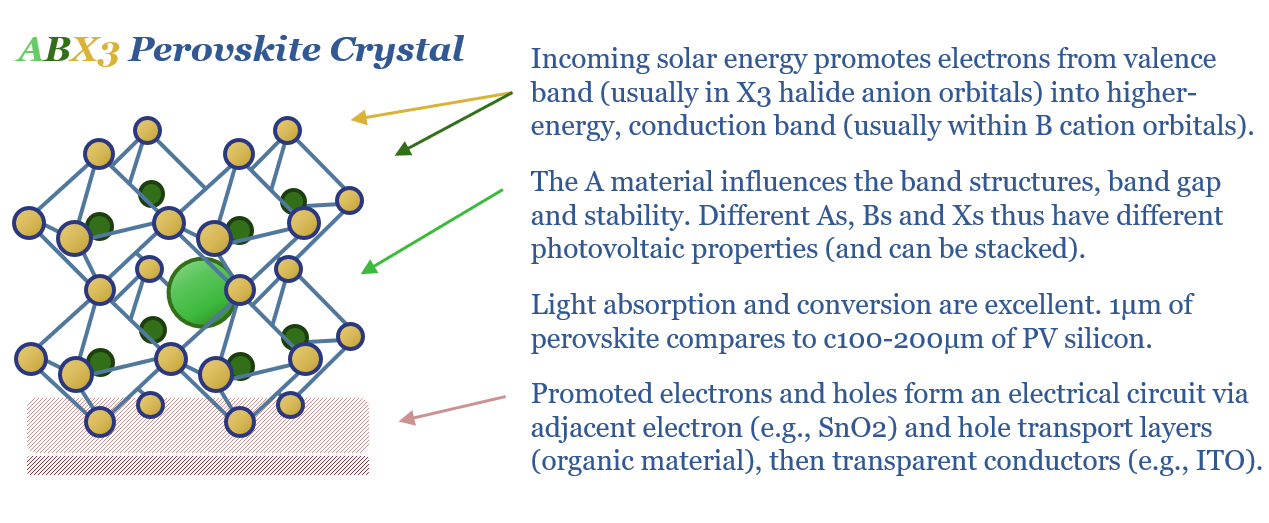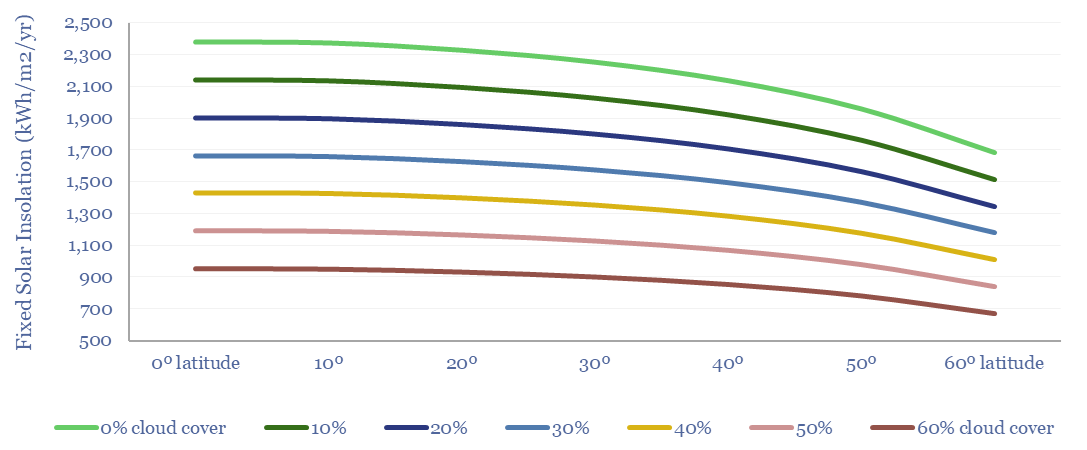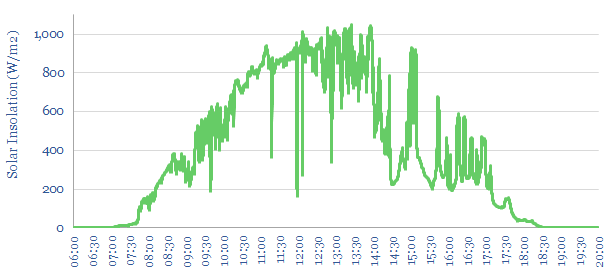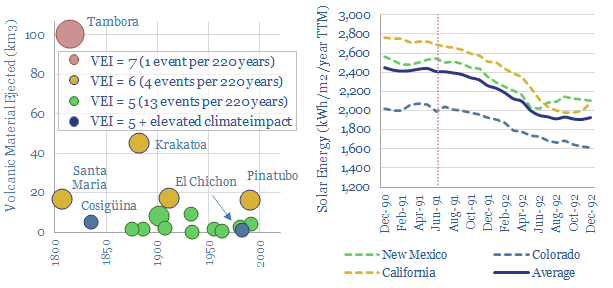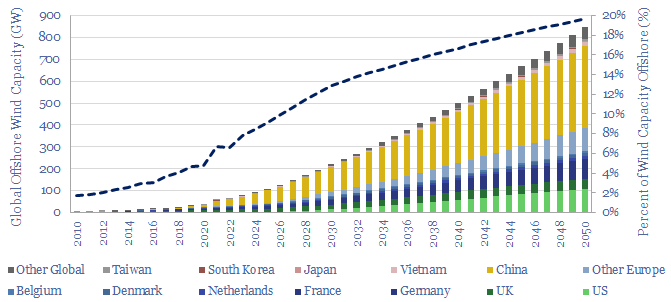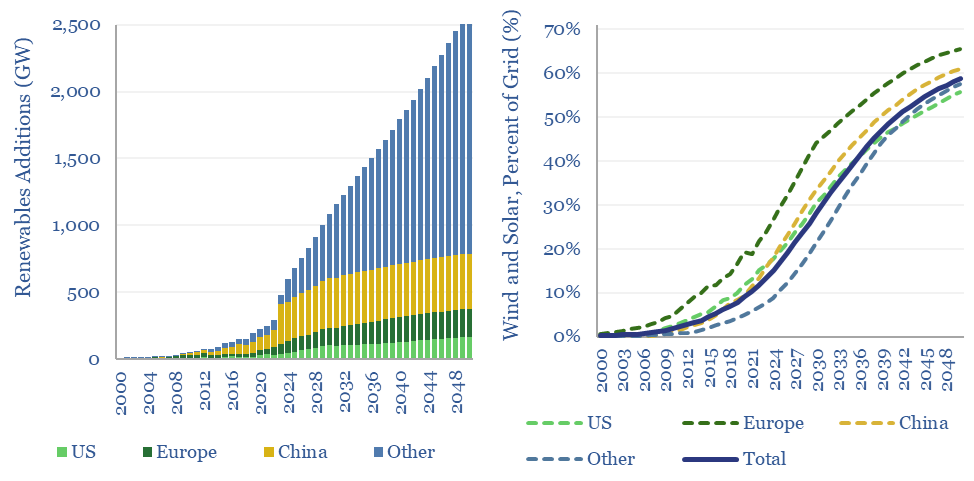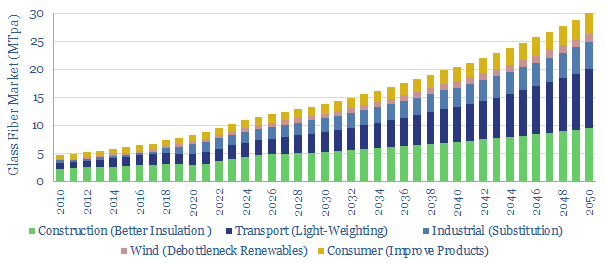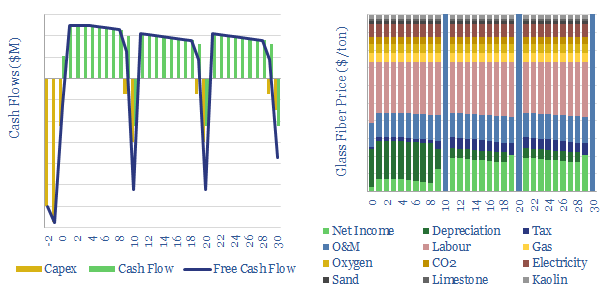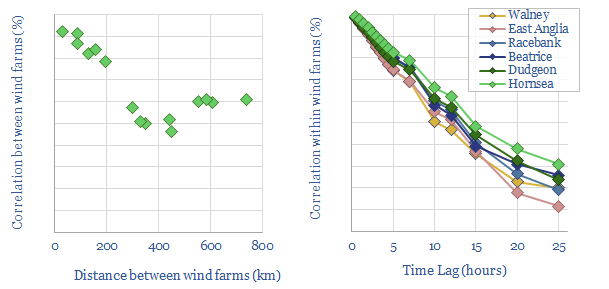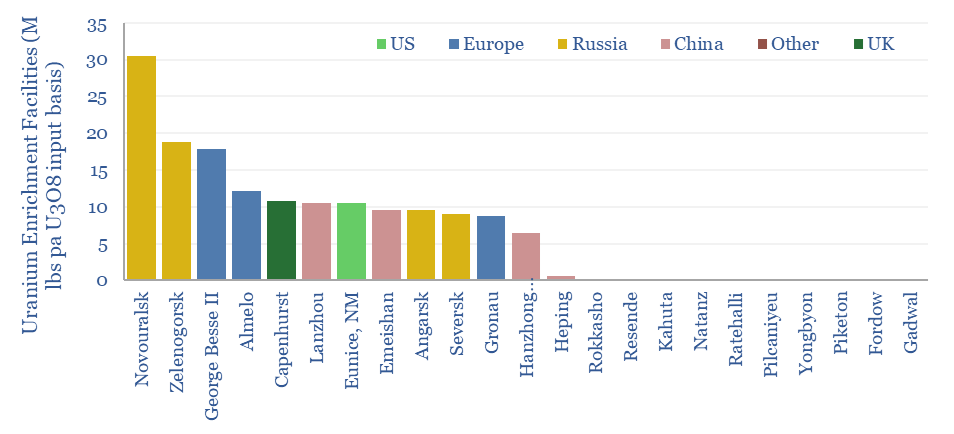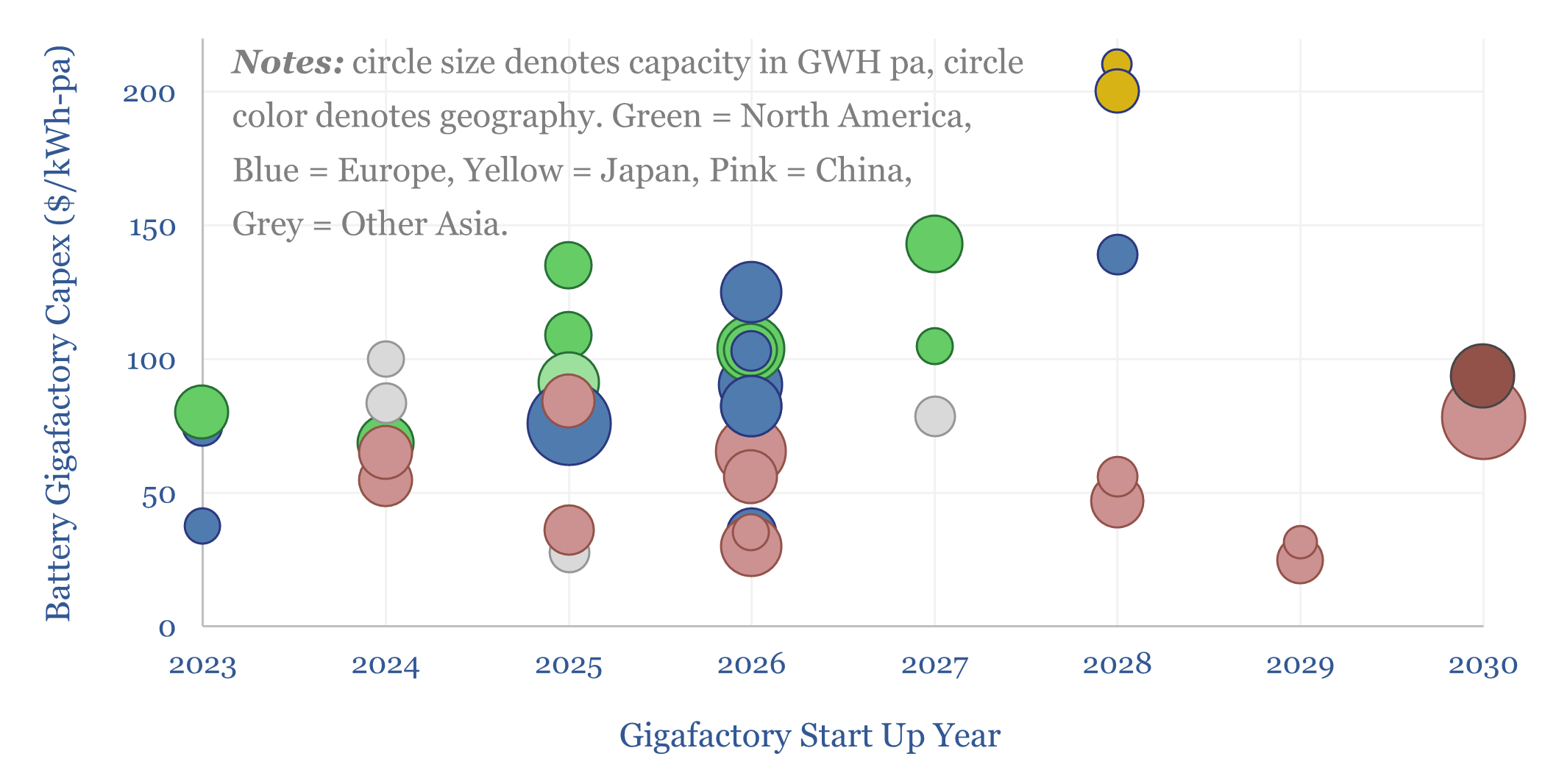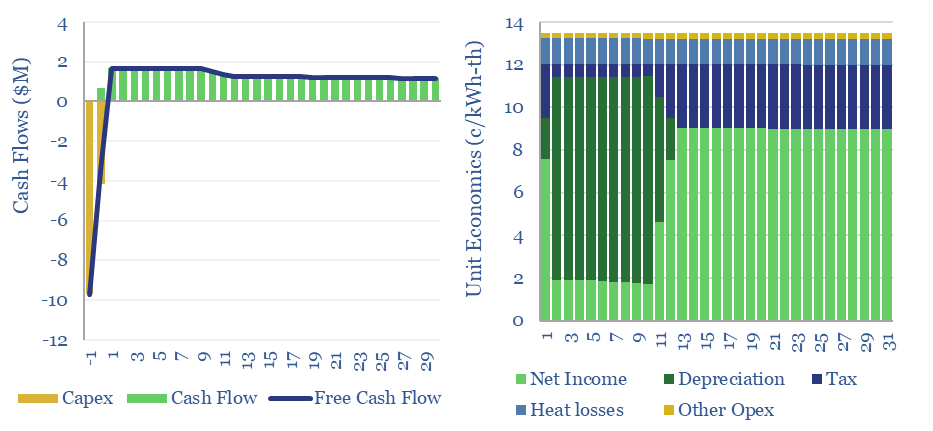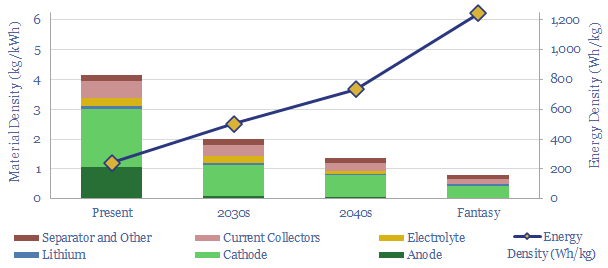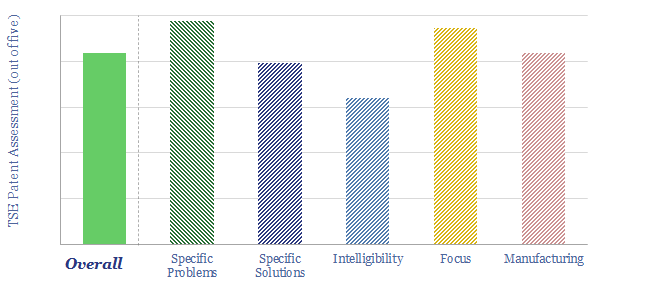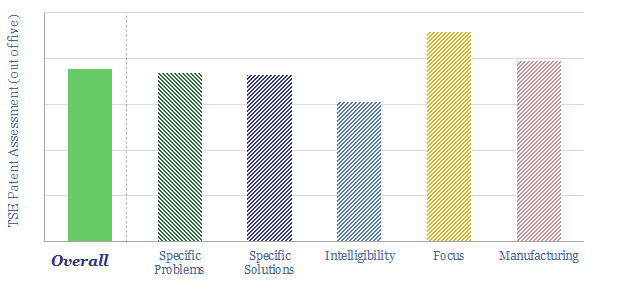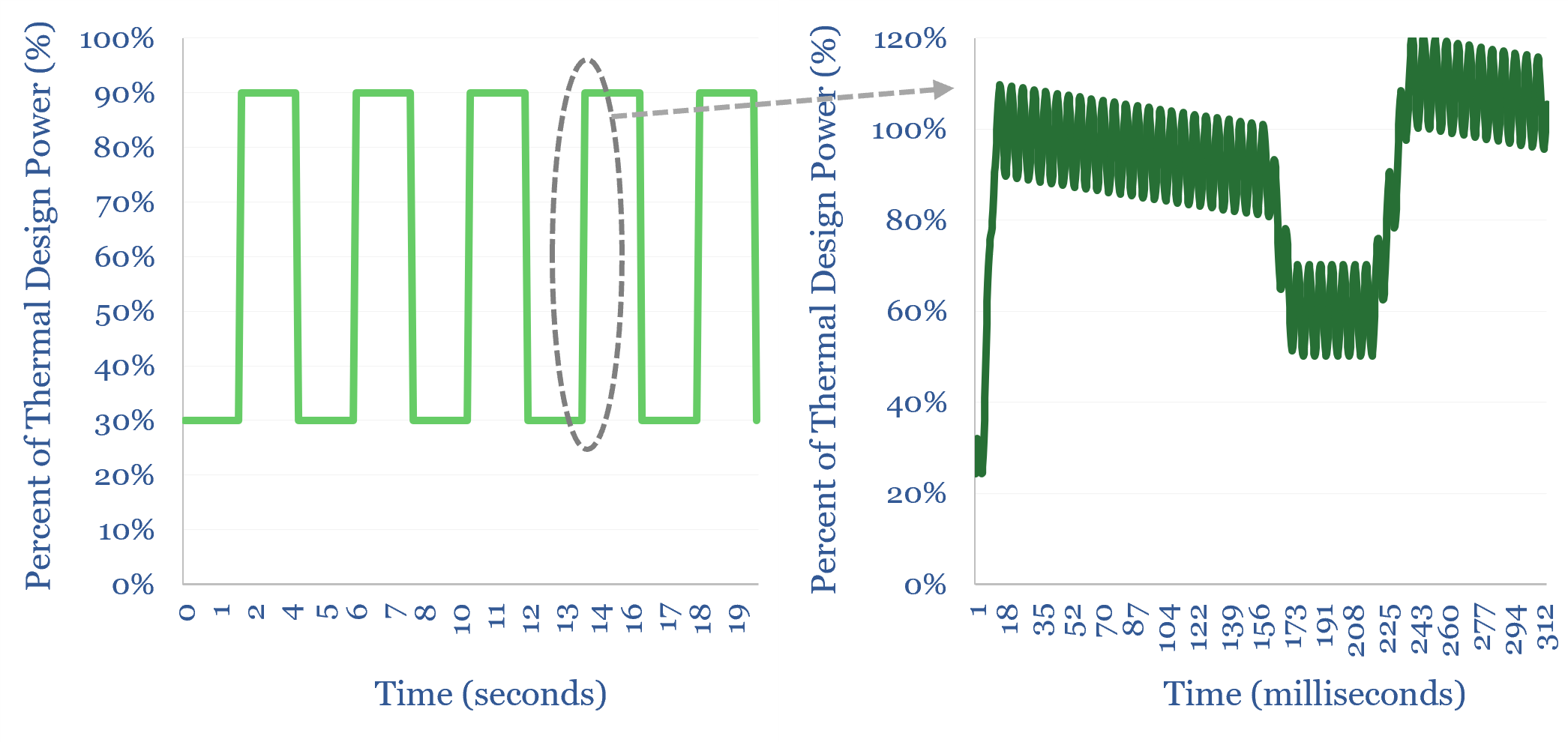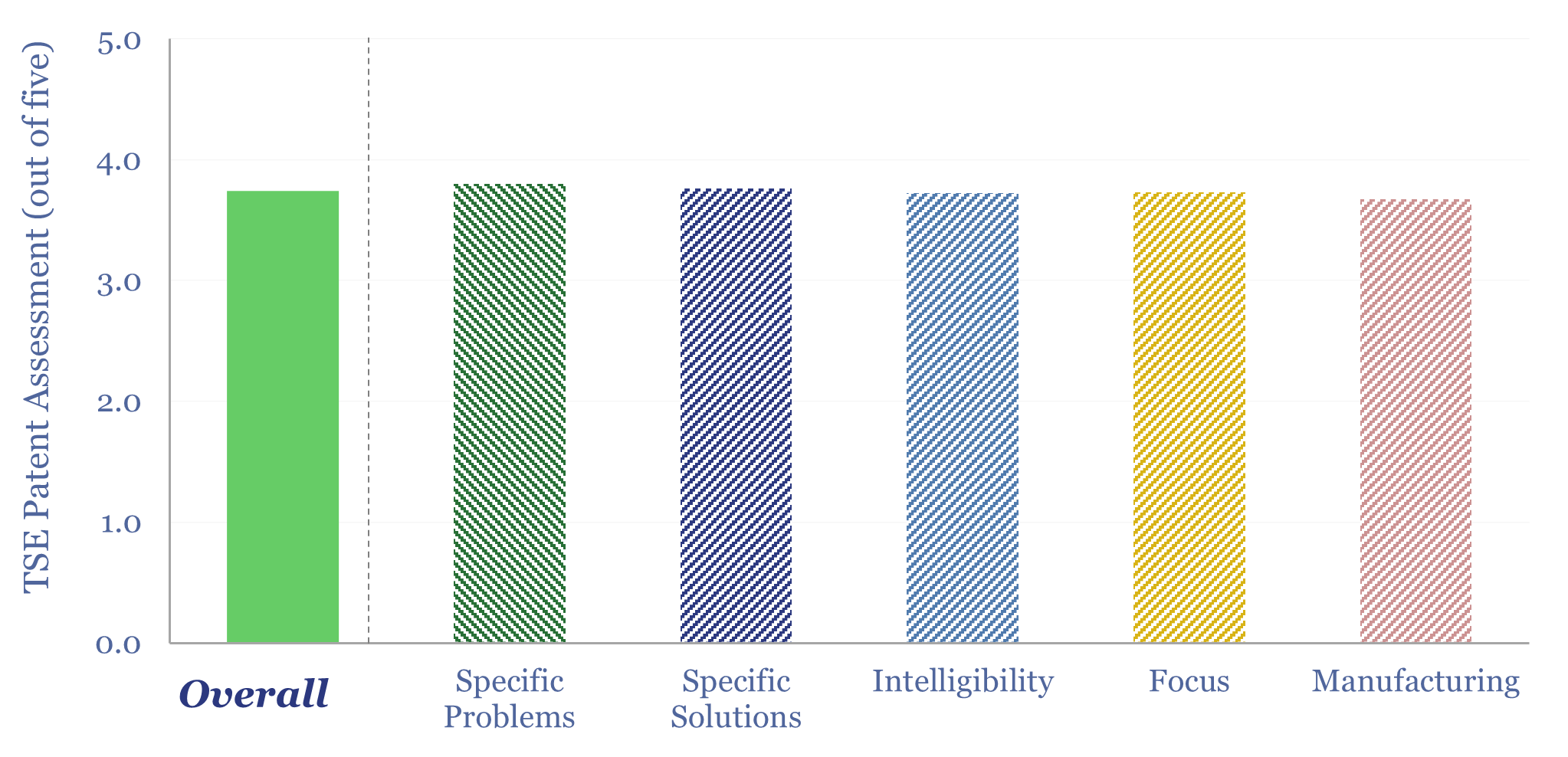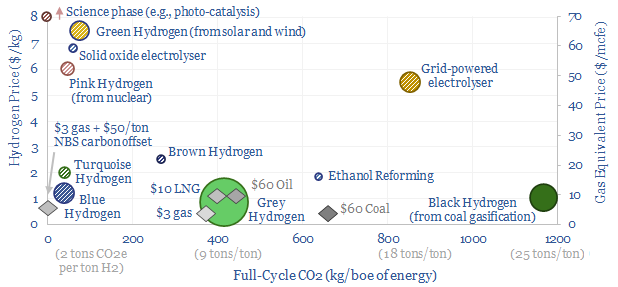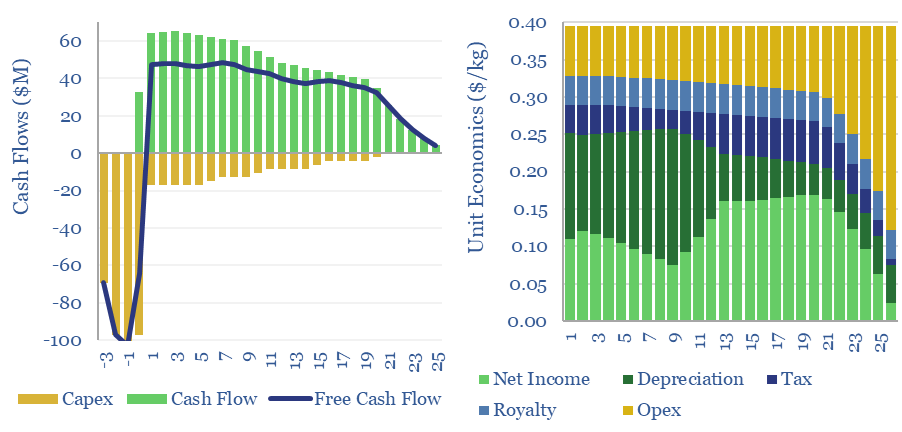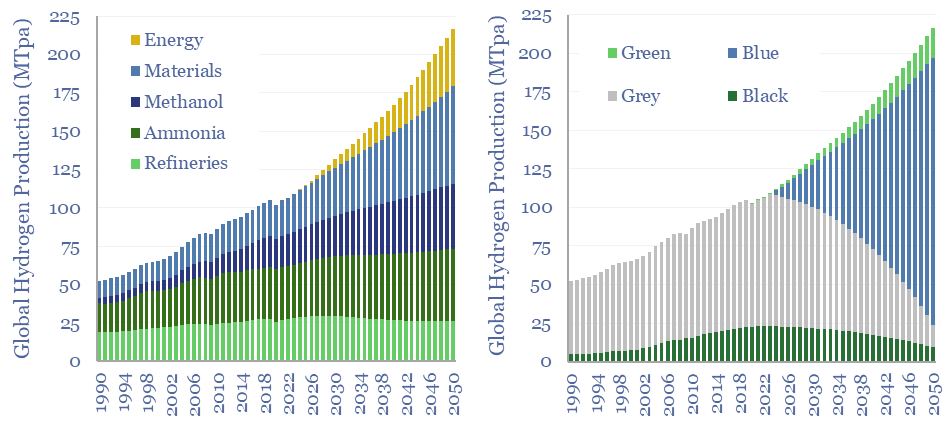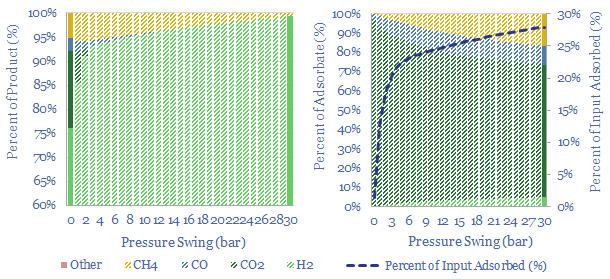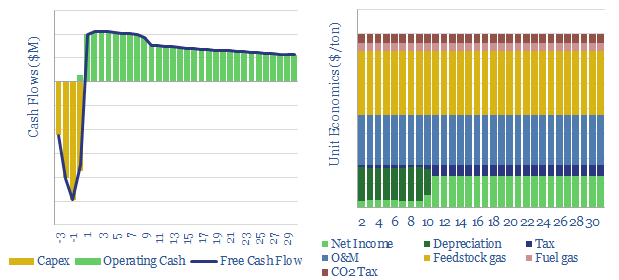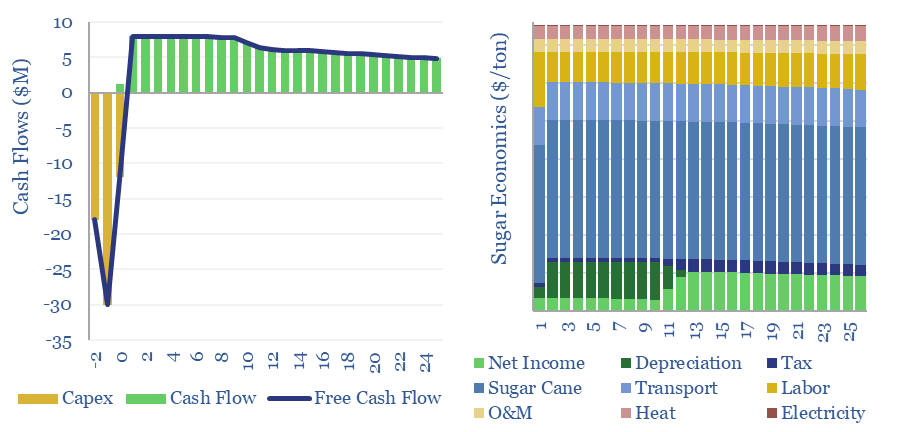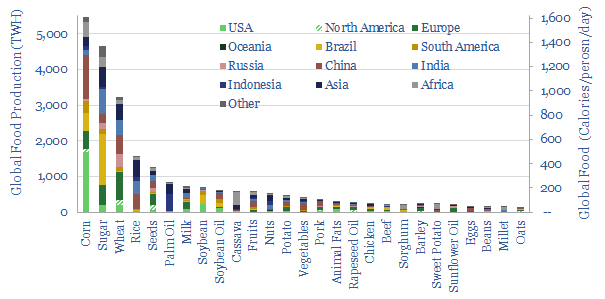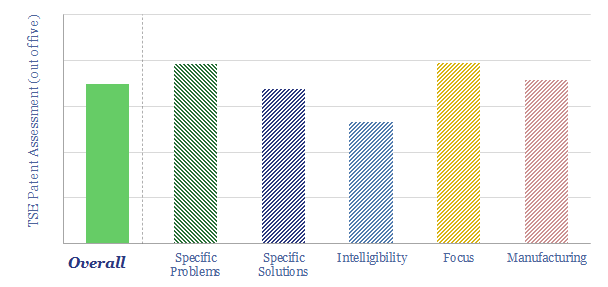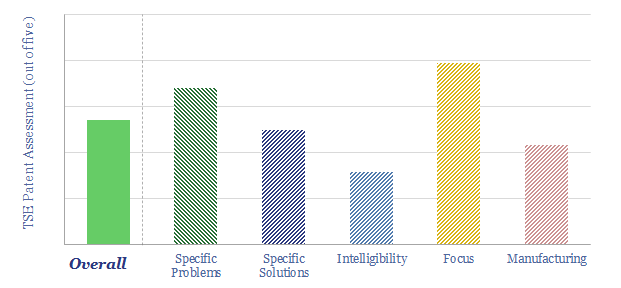Our new energies research explores economic opportunities to drive the energy transition. Our definition of new energies is that they are not derived from the combustion of extracted resources. Solar radiation is directly converted to electricity in a photovoltaic cell. Wind and hydro power harness moving masses of fluids to drive turbines. Nuclear energy derives heat from fissioning heavy atoms; possibly in the future, from fusing light atoms. Generally these new energies yield electricity directly (i.e., no heat engines are involved). Electricity can be the highest-grade form of energy. But electricity also requires resilient power grids, sophisticated power electronics and possibly also energy storage via batteries. Achieving an energy transition requires moving ‘Heaven and Earth’, to de-bottleneck bottlenecks in power transmission (heaven) and mined metals and materials (earth). We also consider hydrogen and biofuels among new energies.
Solar Research
New energies deflation: myths and legends?
Download
Perovskite solar: beyond silicon?
Download
Perovskite solar companies screen?
Download
Material and manufacturing costs by region: China vs US vs Europe?
Download
Energy transition: solar and gas -vs- coal hard reality?
Download
Grid-forming inverters: islands in the sun?
Download
Solar trackers: following the times?
Download
Solar trackers: leading companies?
Download
Solar plus batteries: the case for co-deployment?
Download
Solar+battery co-deployments: output profiles?
Download
Solar generation: minute by minute volatility?
Download
Solar Superpowers: ten qualities?
Download
Solar insolation: by latitude, season, date, time and tilt?
Download
Electromagnetic energy: Planck, Shockley-Queisser, power beaming?
Download
Vapor deposition: leading companies?
Download
Global solar: absorption spectrum?
Download
Silver pastes for solar contacts?
Download
LONGi: technology review and solar innovations?
Download
Solar module production by company?
Download
Solar inverters: companies, products and costs?
Download
Semiconductor physics: pièce de resistance?
Download
Semiconductors: conductivity calculations?
Download
Mitsui Chemicals: solar encapsulants?
Download
Global polysilicon production capacity?
Download
New energies: the age of materials?
Download
Solar costs: a breakdown over time?
Download
HJT solar: Indium summer?
Download
Vacuum pumps: company screen?
Download
Renewables: how much time to connect to the grid?
Download
Solar surface: silver thrifting?
Download
Model of losses in a solar cell: surface, emitter and shading?
Download
Solar capacity: growth through 2030 and 2050?
Download
Ethylene vinyl acetate: production costs?
Download
Solar: energy payback and embedded energy?
Download
Solar volatility: tell me lies, tell me sweet little lies?
Download
Solar volatility: second by second output data?
Download
Solar volatility: interconnectors versus batteries?
Download
Solar variability: how much does solar energy vary by year?
Download
Power transmission: inter-connectors smooth solar volatility?
Download
Energy security: volcanos versus solar panels?
Download
Wind Research
New energies deflation: myths and legends?
Download
Wind energy: beyond good and evil?
Download
Wind turbine capacity factors: by country, by facility?
Download
Companies mitigating radar interference of wind turbines?
Download
Wind generation case study: minute by minute volatility?
Download
Offshore wind: the lion, the witch and the wardrobe?
Download
Offshore wind: capacity by country and forecasts?
Download
Offshore wind: levelized costs?
Download
Wind turbine generators: DFIGs or Rare Earth magnets?
Download
Offshore vessels: fuel consumption?
Download
Wind power: energy costs, energy payback and EROEI?
Download
Renewables: how much time to connect to the grid?
Download
Offshore wind: installation costs by vessel?
Download
Goldwind: frequency response from wind turbines?
Download
Offshore wind: installation vessels and time per turbine?
Download
Cable installation vessels: costs and operating parameters?
Download
Wind volatility: second by second output data?
Download
Wind power: operating costs?
Download
FACTS of life: upside for STATCOMs & SVCs?
Download
Wind and solar capacity additions?
Download
Glass fiber: what upside in the energy transition?
Download
Glass fiber: the economics?
Download
Wind turbines: screen of resin and polymer specialists?
Download
Renewables: can they ramp up faster?
Download
Windy physics: how is power of a wind turbine calculated?
Download
Small-scale wind turbines: leading companies?
Download
Carbon fiber: the miracle material?
Download
Carbon fiber: energy economics?
Download
Offshore wind: will costs follow Moore’s Law?
Download
Siemens Gamesa: giant wind turbine breakthroughs?
Download
Moore’s law: causes and new energies conclusions?
Download
Inter-correlations between offshore wind farms?
Download
Onshore wind: the economics?
Download
Prevailing wind: new opportunities in grid volatility?
Download
Floating offshore wind: what challenges?
Download
Floating offshore wind: what challenges?
Download
Vestas: where’s the IP?
Download
Wind power: decline rate conclusions?
Download
Wind power: decline rates?
Download
Land intensity of energy transition: acres per MW and per ton?
Download
Nuclear Research
Radioactivity of materials: energy, Rare Earths and nuclear?
Download
US nuclear generation by company?
Download
Uranium enrichment: by country, by company, by facility?
Download
Global uranium supply-demand?
Download
Oklo: fast reactor technology?
Download
Reaching criticality: nuclear re-accelerates?
Download
Nuclear capacity: forecasts, construction times, operating lives?
Download
X Energy: nuclear fuel breakthrough?
Download
TerraPower: nuclear breakthrough?
Download
Terrestrial Energy: small modular reactor breakthrough?
Download
General Fusion: magnetized fusion breakthrough?
Download
Japan: nuclear restart tracker?
Download
Commonwealth Fusion: nuclear fusion breakthrough?
Download
Nuclear fusion: what are the challenges?
Download
NuScale: small modular reactor breakthrough?
Download
Back-stopping renewables: the nuclear option?
Download
Power plants: cold starts and ramp rates?
Download
Nuclear power: what role in the energy transition?
Download
Uranium mining: the economics?
Download
Uranium production: by company and by country?
Download
Nuclear Power Project Economics
Download
Next-generation nuclear companies: future fission and fusion?
Download
Batteries Research
Energy storage: top conclusions into batteries?
Download
Economics of flywheels: fast frequency response?
Download
Battery gigafactory capex costs?
Download
Peak loads: can batteries displace gas peakers?
Download
Power grid bottlenecks: flattening the curve?
Download
Battery swapping: off to the races?
Download
Solar plus batteries: the case for co-deployment?
Download
Solar+battery co-deployments: output profiles?
Download
Lithium ion battery volumes by chemistry and use?
Download
LFP batteries: cathode glow?
Download
Pumped hydro: generation profile?
Download
Grid-scale battery operation: a case study?
Download
Renewables plus batteries: co-deployments over time?
Download
Compressed air energy storage: costs and economics?
Download
Electrochemistry: redox potential?
Download
Electric vehicle: battery life?
Download
Thermal energy storage: heat of the moment?
Download
Thermal energy storage: cost model?
Download
Renewable grids: solar, wind and grid-scale battery sizing?
Download
Thermal energy storage: leading companies?
Download
Redox flow batteries: for the duration?
Download
Electrochemistry: battery voltage and the Nernst Equation?
Download
Redox flow batteries: costs and capex?
Download
Battery cathode active materials and manufacturing?
Download
Solvay: lithium ion battery binders and additives?
Download
Lithium ion batteries: energy density?
Download
Electric vehicles: breaking the ICE?
Download
Commercial aviation: fuel economy of planes?
Download
Amprius: silicon anode technology review?
Download
Hillcrest: ZVS inverter breakthrough?
Download
Grid-scale battery costs: the economics?
Download
Eaton: breakdown of revenues by product category?
Download
Battery degradation: causes, effects & implications?
Download
Battery degradation: what causes capacity fade?
Download
Supercapacitors: case studies for renewable-heavy grids?
Download
Powin: grid-scale battery breakthrough?
Download
Solar volatility: interconnectors versus batteries?
Download
Power grids: global investment?
Download
Nostromo: thermal energy storage breakthrough?
Download
24M: semi-solid battery breakthrough?
Download
Power Grids and Power Electronics Research
Power grids: opportunities in the energy transition?
Download
Overview of inertia in renewable-heavy grids?
Download
Data center energy: caps lock?
Download
Economics of flywheels: fast frequency response?
Download
Gas generation: what kind of bear is best?
Download
Wicked smart: what if AI re-shaped the power grid?
Download
Smart meter installations by region over time?
Download
Itron: smart energy network technology?
Download
Peak loads: can batteries displace gas peakers?
Download
Peak power demand by region (and case studies)
Download
Power grid bottlenecks: flattening the curve?
Download
US electricity demand: by sector, by use, over time?
Download
Load profiles in power grids?
Download
Energy and national security: network risk?
Download
Water intensity of power generation?
Download
Residential energy prices: reasons for optimism?
Download
eHighways: trucking by wire?
Download
Smart Wires: grid capacity breakthroughs?
Download
eHighway economics: costs of electrifying heavy trucks?
Download
Grid-forming inverters: islands in the sun?
Download
Duck curves: US power price duckiness over time?
Download
Kraken Technologies: smart grid breakthrough?
Download
Global electricity: by source, by use, by region?
Download
US power generation under development over time?
Download
Power generation: asset lives?
Download
Purchasing power: what are generation assets worth?
Download
Prysmian E3X: reconductoring technology?
Download
Transaction prices for power generation assets?
Download
Global power price volatility tracker?
Download
Reserve margins: by ISO and over time?
Download
Gas peaker plants: the economics?
Download
Gas power generation across five-minute intervals?
Download
Superconductors: distribution class?
Download
Superconductor screen: projects, materials, companies?
Download
Moving targets: molecules, electrons or bits ?!
Download
Advanced Conductors: current affairs?
Download
Gas power: does low utilization entail spare capacity?
Download
Power distribution: the economics?
Download
Power transmission: the economics?
Download
Advanced Conductors versus ACSR: costs and companies?
Download
Hydrogen Research
Hydrogen: overview and conclusions?
Download
Vehicle depreciation rates: EVs versus ICEs?
Download
Air Products: ammonia cracking technology?
Download
Natural hydrogen: going for gold?
Download
Cemvita Factory: microbial breakthroughs?
Download
Gold hydrogen: the economics?
Download
Bright green hydrogen from biomass gasification?
Download
Nafion membranes: costs and hydrogen crossover?
Download
Electrochemistry: redox potential?
Download
Density of gases: by pressure and temperature?
Download
Hydrogen evolution: outlook for industrial gases?
Download
Global hydrogen supply-demand: by region, by use & over time?
Download
Plug power: green hydrogen breakthroughs?
Download
MIRALON: turquoise hydrogen breakthrough?
Download
Bloom Energy: solid oxide fuel cell technology?
Download
Hydrogen reformers: SMR versus ATR?
Download
US hydrogen production: by facility and by company?
Download
Industrial gas separation: swing producers?
Download
Adiabatic flame temperature: hydrogen, methane and oil products?
Download
Topsoe: autothermal reforming technology?
Download
Combustion fuels: density, ignition temperature and flame speed?
Download
Blue ammonia: options strategy?
Download
Sabatier process: synthetic natural gas costs?
Download
NEL: green hydrogen technology review?
Download
Energy policy: unleashing new technologies?
Download
Costs of hydrogen from coal gasification?
Download
Green hydrogen: can electrolysers run off renewables?
Download
Hydrogen: what GWP and climate impacts?
Download
Pressure ratings: industrial and energy processes?
Download
Monolith: turquoise hydrogen breakthrough?
Download
Turquoise hydrogen from methane pyrolysis: economics?
Download
Electro-fuels: start out as a billionaire?
Download
Green hydrogen electrolysers in Europe: a database?
Download
Power-to-liquids: companies commercializing electro-fuels?
Download
Power-to-liquids: the economics?
Download
Methanol: the next hydrogen?
Download
Methanol production: the economics?
Download
Energy economics: energy content of combustion fuels?
Download
Hydrogen blending: costs and complexities?
Download
Proton exchange membrane fuel cells: what challenges?
Download
Biofuels Research
Biofuel technologies: an overview?
Download
Sustainable aviation fuel: flight path?
Download
Oil crops: the economics?
Download
Waste-to-energy: levelized costs of electricity?
Download
Global biofuel production: by region, by liquid fuel?
Download
Costs of biogas upgrading to biomethane?
Download
Sugar to ethanol: value in volatility?
Download
Sugar to ethanol: the economics?
Download
Sugar production: the economics?
Download
Global biogas production by country?
Download
Biogas: the economics?
Download
Verbio: bio-energy technology review?
Download
Energy history: how much wood can be cut in a day?
Download
Crop production: how much does nitrogen fertilizer increase yields?
Download
Crop production: what CO2 intensity?
Download
Bio-coke: energy economics?
Download
World food production: energy breakdown by crop by country?
Download
Palm oil: what CO2 intensity?
Download
Biofuels: the best of times, the worst of times?
Download
Wood use: what CO2 credentials?
Download
Landfill gas: rags to riches?
Download
Landfill gas: the economics?
Download
Danimer: bio-plastics breakthrough?
Download
LanzaTech: biofuels breakthrough?
Download
Origin Materials: bio-plastics breakthrough?
Download
Ethanol: hangover cures?
Download
Ethanol-to-ethylene: the economics?
Download
Ethanol: getting wasted?
Download
Ethanol from corn: the economics?
Download
Biogas-to-liquids: decarbonize aviation fuels?
Download
Biochar: burnt offerings?
Download
Biomass to biochar: the economics?
Download
Leading companies in biochar?
Download
Next-generation plastics: bioplastic, biodegradable, recycled?
Download
Methanol production: the economics?
Download
Biomass and BECCS: what future in the transition?
Download
Biomass power: costs, levelized costs and BECCS?
Download
Renewable diesel: the economics?
Download
Biofuels: better to bury than burn?
Download
Biomass to biofuel, or biomass for burial?
Download

